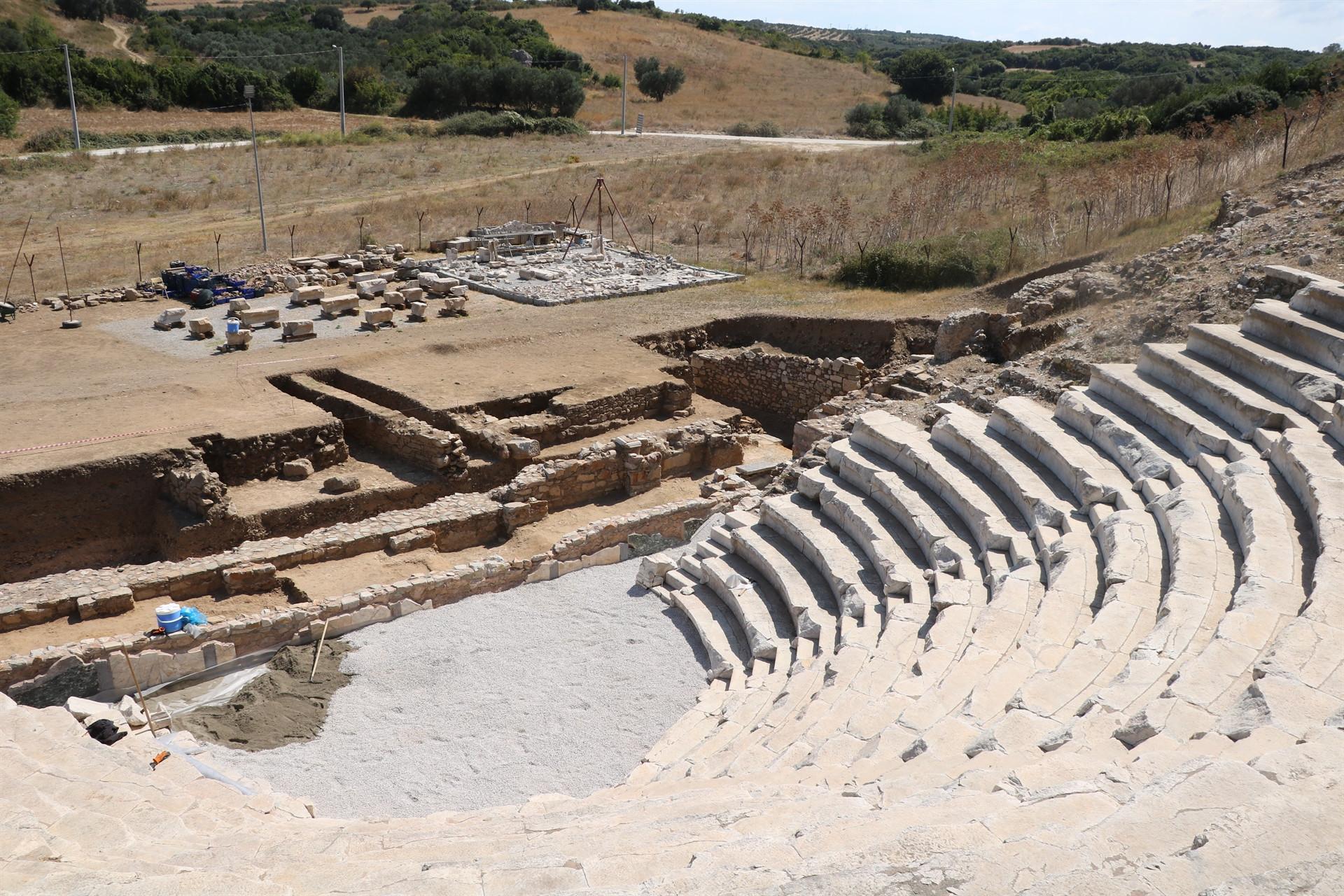
Excavations in one of the important port cities in the ancient ages, Parion, have revealed information about the architecture of the stage building after five years of work.
The Ministry of Culture and Tourism has chosen Parion as one of the 20 archaeological excavation sites where works will continue throughout the year. The ancient city in the northwestern province of Çanakkale’s Biga district dates back 2,700 years.
In the Odeon (a rectangular covered structure where concerts were organized, poems recited and games played in ancient Greece), the architecture of the stage building was unearthed.
Speaking to the state-run Anadolu Agency, Atatürk University academic Hasan Kasapoğlu, who has coordinated the excavations in Odeon since 2010, said that they completely unearthed the “kavea” section, where the rows of seats are, during works between 2010 and 2014.
Kasapoğlu explained that all the stone works should be evaluated scientifically in order to identify the architectural parts and the stage building, which is completely destroyed in the front of the building, and to obtain clear information about its superstructure.
“For this, with the suggestion of the head of the excavation committee, Vedat Keleş, we created a large stone platform in this area. We began to group hundreds of architectural pieces on this stone platform,” he added.
Emphasizing that this grouping was the beginning of a very serious “puzzle,” Kasapoğlu said, “Because we have a very perfect structure and it had no stage building. The only way to imagine this stage building on our mind was to solve this puzzle.”
Kasapoğlu said that they tried to integrate the pieces in the last five years and finally, reached important results.
“We uncovered one of the most important elements of the stage building, the pediment (the entrance or the triangular or semi-ornament decoration on the doors and windows), by combining almost 40 pieces. As a result, we uncovered a pediment about 3 meters wide. We obtained very important data about the superstructure such as the column drum, Corinthian column headings, the architectural parts that we call architrave, cornice at the top and the pediment. This puzzle took us to a very serious conclusion in terms of unraveling the stage building,” he said.
Kasapoğlu said that they completely solved what was happening in the building from the bottom to the top of the stage building.
“We obtained clear data on a building from 1,850 years ago. In other words, we solved an image that existed 1,850 years ago with 10 years of excavations and five years of puzzle work,” he added.
Speaking of their next goals, Kasapoğlu said the following: “We want to revive each of the integrated parts in digital environment with animation and 3D works. With the help of digital systems and 3D glasses, we plan to create an environment where we can fully construct the structure and can take people to 1,850 years ago.”